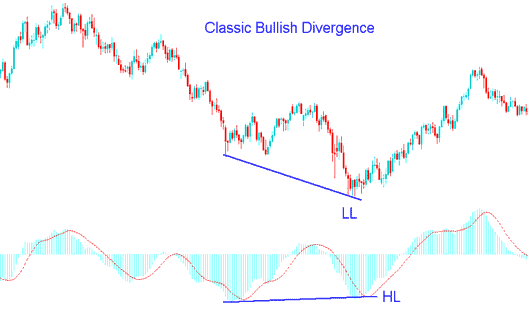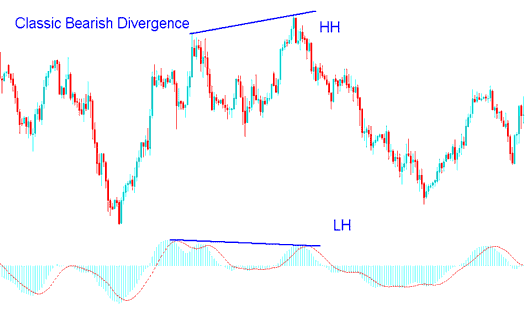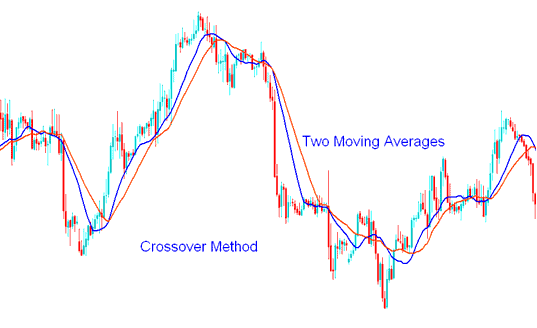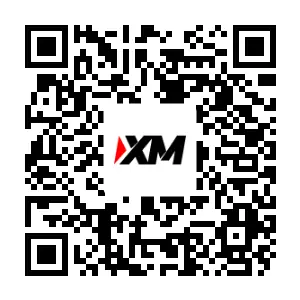Classic bullish vs. bearish divergence - how to spot the difference when trading.
In trading, classic divergence may signal a trend reversal and is used by traders when they're looking for a point where the price might change and start moving in the opposite direction. Therefore, this setup can be a low-risk way to enter a trade and an accurate way to exit a trade.
This trading strategy is a low risk method to sell near the top or buy near the bottom, this makes the risk in your trades are very small compared to the potential reward. Nevertheless, most traders advise against employing this approach because it includes a lot of whipsaws.
Divergence analysis is also instrumental in forecasting the optimal exit point for an active trade. If you currently hold a position that is already yielding returns, identifying the specific point where this divergence setup appears serves as an excellent indicator for booking profits.
There are 2 types, based on the direction of the market trend:
- Classic Bullish divergence
- Classic Bearish divergence setup
Stock Classic Bullish Divergence
A common sign of a price increase is when the price makes new lower points, but the technical indicator makes higher low points. The example explained and shown below has a picture of how this trade looks.

Index Classic Bullish Divergence Trading Setup
This example uses MACD indicator as a divergence indicator.
In the example, price hit a lower low, but the indicator made a higher low. This divergence between price and indicator hints at a trend reversal.
Classic bullish divergence setup signal warns of a possible change in the trend from down to up. This is because though the stock market price went lower the volume of the sellers who pushed the stock price lower was less like as shown by MACD indicator. This demonstrates underlying weakness of the downward trend.
Classic bearish Index Trade Divergence Setup
Classic bearish divergence trade setup forms when the price is making/forming a higher high (HH), but the oscillator indicator is lower high (LH). The image screenshot below shows an example of the set-up.

Index Trade Classic Bearish Divergence
MACD indicator is also used in this example.
From the above example illustration the price made a higher high(HH) but the trading indicator made a Lower High(LH), this displays there is a divergence between the stock price and the indicator. The signal warns of a possible market trend direction reversal.
A classic bearish diverging signal suggests a potential trend change from up to down. This signal arises when the stock price increases but is accompanied by a decrease in buyer volume, as illustrated by the MACD, indicating a weakening upward trend.
In the example above, a divergence setup would have given clear entry and exit signals at the best times. But like other tools, divergence can lead to false signals and whipsaws. Always check these signals with indicators like RSI, moving averages, and stochastics.
Pair the stochastic oscillator with classic divergence setups. Wait for its lines to match the signal and confirm the move.
Another good technical indicator to combine together with is the Moving Average trading indicator, in this technical indicator a indices trader should use the Moving Average Crossover System
Example of Moving Average Cross-over Method Strategy

When a divergence signal is identified, a stock index trader will wait for the Moving Average crossover trading method to generate a trade signal in the same direction of the trend. If there is a classic bullish setup, the trader will wait for an upward crossover signal from the moving average system. Conversely, for a classic bearish divergence signal, the trader should wait for a downward crossover signal from the Moving Average system.
By integrating traditional divergence setups with additional indicators, traders can effectively avoid whip-saws when trading classic divergence signals. This approach allows traders to wait until the stock market has genuinely reversed and is moving in the intended direction, thereby preventing them from falling into the trap of attempting to pick market tops and bottoms.
Discover More Manuals & Training:
- Where Do I Study How to Trade Index in MetaTrader 4 App
- How Can I Get DJ30 in MetaTrader 4 App?
- DJI 30 Stock Index Opening Time
- How Do You Draw Upward Trend-lines in MetaTrader 5 Platform Software?
- How to Place Take Profit Index Order in MetaTrader 4 Platform
- Support and Resistance Levels Trading Indicator Analysis
- What's S&PASX200 Spreads? S&P ASX 200 Stock Index Spread

